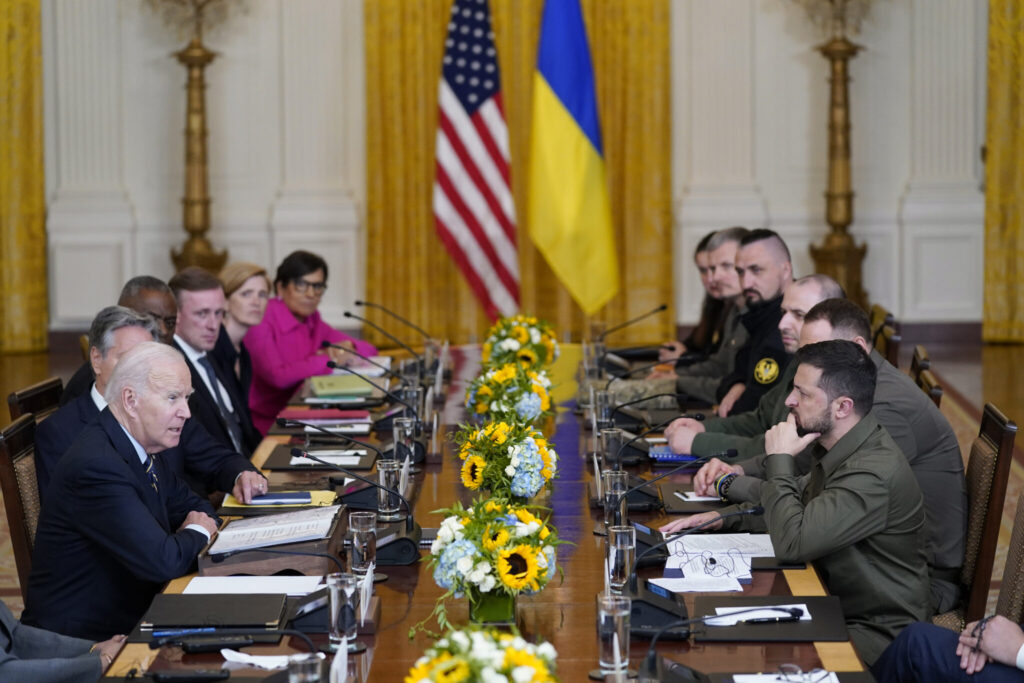As war and winter collide, a top adviser to Ukrainian President Volodymyr Zelenskyy acknowledged during a recent visit to Washington that the days ahead “will be tough” as his country battles Russia while U.S. support from Congress hangs in the balance.
Quick Read
- Tough Times Ahead for Ukraine: A top adviser to Ukrainian President Volodymyr Zelenskyy, during a visit to Washington, acknowledged the challenging situation Ukraine faces as it battles Russia, especially with winter approaching.
- U.S. Aid Package Stalled: President Joe Biden’s nearly $106 billion aid package for Ukraine, Israel, and other needs is stalled in Congress. It has neither been approved nor rejected but is subject to new political demands, particularly from Republicans.
- Link to U.S. Border Policy: Republicans are insisting on changes to U.S.-Mexico border policy to halt the flow of migrants as a condition for supporting Ukraine’s military assistance, intertwining domestic and foreign policy issues.
- Congressional Action Pending: Upon return from the holiday break, Congress will have Biden’s request high on its agenda. The failure to act could delay U.S. military aid to Ukraine and Israel, impacting America’s global standing.
- Partisan Divisions in the U.S.: The bipartisan support for Ukraine is facing challenges, particularly from a hard-right wing of Republican lawmakers, with public opinion divided over the level of aid to Ukraine.
- Republican Demands: Senate Republican leader Mitch McConnell has indicated that GOP support for Ukraine is contingent on Democrats accepting border policy changes, including more stringent asylum laws and resuming construction of the border wall.
- Negotiations on Border Policy: Bipartisan groups in the Senate are discussing potential border policy solutions to unlock Republican votes for Ukraine aid.
- White House’s Broader Aid Package: The White House has requested approximately $14 billion for border security as part of the broader package, including measures to enhance border patrol, detention facilities, and judicial processing of immigration cases.
- Pentagon Funding Concerns: The Pentagon’s funding for Ukraine is running low, raising concerns about the impact on U.S. troop readiness and equipment.
- Spending on Ukraine Aid: Of the $113 billion approved by Congress for Ukraine since February 2022, half has gone to the Defense Department for building Ukraine’s armed forces and replenishing U.S. stockpiles.
- National Security Implications: National security experts acknowledge the significance of U.S. aid in supporting Ukraine’s military efforts against Russia.
- Republican Skepticism: Even with border security provisions, some Republicans remain skeptical of Biden’s commitment to support Ukraine indefinitely. There is a divide within the GOP regarding the extent and nature of support for Ukraine.
- Separating Military and Government Funds: Efforts are being made by some Republicans to separate military funds from the money spent on the Kyiv government and to urge the Biden administration to present a clearer strategy for the war’s endgame.
- Opposition to Ukraine Aid: Some Republicans, notably Rep. Marjorie Taylor Greene, are strongly against providing aid to Ukraine.
- Ukrainian Perspective: Ukrainian officials are grateful for U.S. support but emphasize the need for continued and increased assistance, especially considering the difficult winter ahead.
The Associated Press has the story:
The debate over Ukraine became tangled up in US border security
Newslooks- WASHINGTON (AP)
As war and winter collide, a top adviser to Ukrainian President Volodymyr Zelenskyy acknowledged during a recent visit to Washington that the days ahead “will be tough” as his country battles Russia while U.S. support from Congress hangs in the balance.
President Joe Biden’s nearly $106 billion aid package for Ukraine, Israel and other needs sits idle in Congress, neither approved nor rejected, but subjected to new political demands from Republicans who are insisting on U.S.-Mexico border policy changes to halt the flow of migrants.
Linking Ukraine’s military assistance to U.S. border security interjects one of the most divisive domestic political issues — immigration and border crossings — into the middle of an intensifying debate over wartime foreign policy.
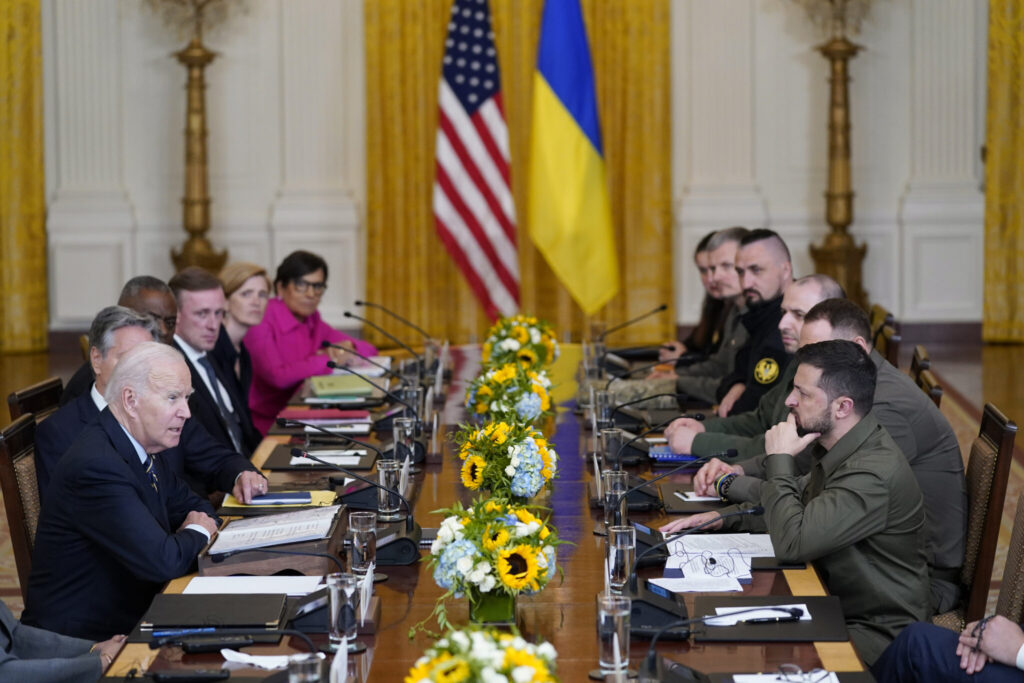
When Congress returns this coming week from the holiday break, Biden’s request will be a top item on the to-do list, and the stakes couldn’t be higher. Failure risks delaying U.S. military aid to Kyiv and Israel, along with humanitarian assistance for Gaza, in the midst of two wars, potentially undermining America’s global standing.
“It’s coming at a crucial time,” said Luke Coffey, a senior fellow at the Hudson Institute, which recently hosted Andriy Yermak, the Ukrainian president’s chief of staff, at the discussion in Washington.
“We’re running out of money,” Coffey said in an interview.
What just a year ago was overwhelming support for Ukraine’s young democracy as it reaches for an alliance with the West to stop Russian President Vladimir Putin’s invasion has devolved into another partisan fight in the United States.
Members of Congress overwhelmingly support Ukraine, embracing Zelenskyy as they did when he arrived on a surprise visit last December to a hero’s welcome. But the continued delivery of U.S. military and government aid is losing favor with a hard-right wing of Republican lawmakers and with some Americans.
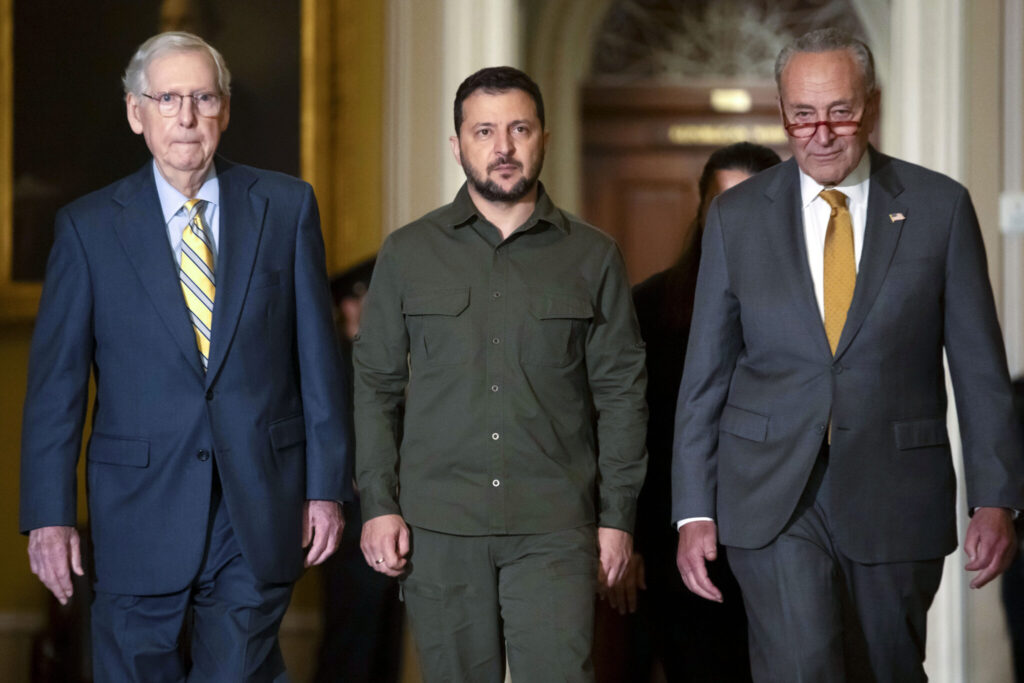
Nearly half of the U.S. public thinks the country is spending too much on aid to Ukraine, according to polling from The Associated Press-NORC Center for Public Affairs Research.
Rather than approve Biden’s request, which includes $61 billion for Ukraine, Republicans are demanding something in return.
Senate Republican leader Mitch McConnell of Kentucky has said the “best way” to ensure GOP support for Ukraine is for Biden and Democrats to accept border policy changes that would limit the flow of migrants across the border with Mexico.
“It’s connected,” he said in an interview with The Associated Press.
To that end, a core group of senators, Republicans and Democrats, have been meeting privately to come up with a border policy solution that both parties could support, unlocking GOP votes for the Ukraine aid.
On the table are asylum law changes pushed by the Republicans that would make it more difficult for migrants to enter the United States, even if they claim they are in danger, and reduce their release on parole while awaiting judicial proceedings. Republicans also want to resume construction of the border wall.
Democrats call these essentially nonstarters, and the border security talks are going slowly. Those who have worked on immigration-related issues for years see a political disaster in the making for all sides — Ukraine included.
“I think it’s terrible that we’re in the position we’re in,” said Sen. Chris Murphy, D-Conn.
“But you know, we were talking all through the night and talking all day today,” he said recently, “trying to find a path forward.”
He added: “I’m not confident we’ll get there.”
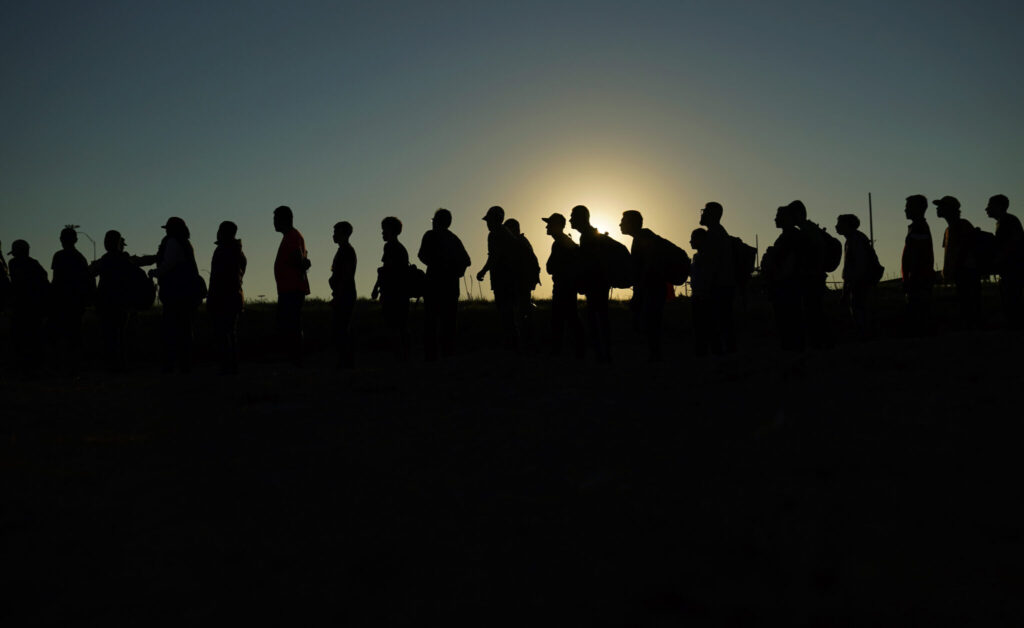
Republicans, even defense hawks who strongly back Ukraine, insist the money must come with U.S. border provisions.
“The reality is, if President Biden wants Ukraine a to pass we’re going to have to have substantial order policy changes,” said Sen. Tom Cotton, R-Ark., often a McConnell ally on defense issues.
The White House has requested roughly $14 billion for border security in its broader package, with money for more border patrol officers, detention facilities and judges to process immigration cases. It also includes stepped-up inspections to stop the flow of deadly fentanyl.
Biden and his national security team recently with key senators of both parties. With Congress narrowly split, Republicans holding slim majority control of the House and Democrats a close edge in the Senate, bipartisan agreement will almost certainly be required for any legislation to advance.
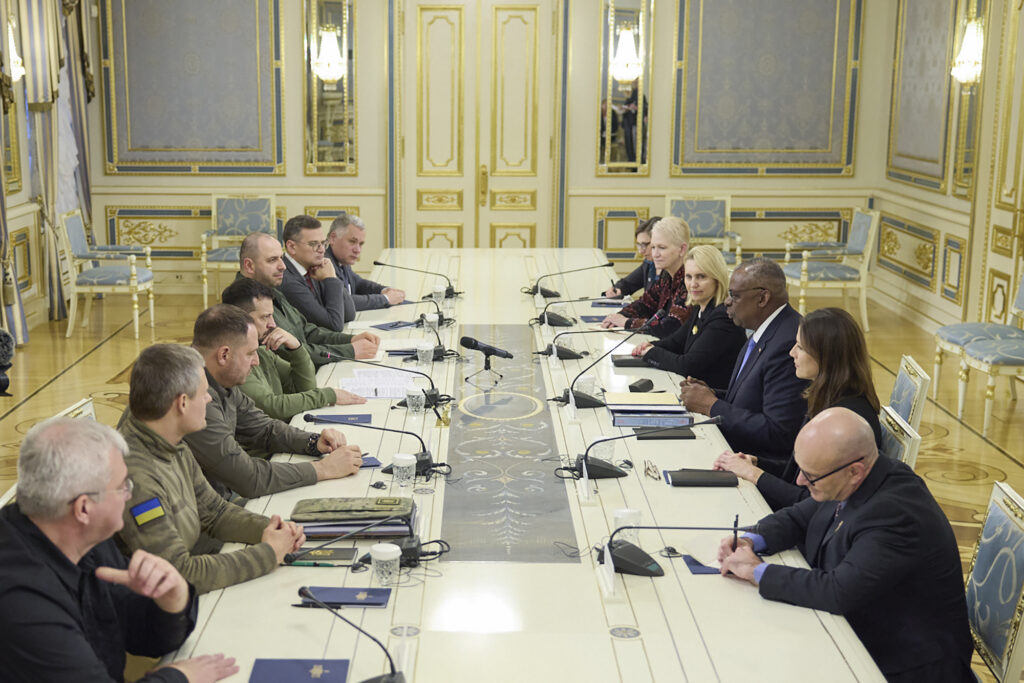
Pentagon funding for Ukraine is rapidly dwindling. The Defense Department has the authority to take about $5 billion worth of equipment from its stockpiles to send to Ukraine, but only has about $1 billion to replenish those stocks. So military leaders are worried about the effect on U.S. troop readiness and equipping.
The need for an infusion of funding is growing “by the day” said Pentagon spokeswoman Sabrina Singh.
Overall, half the $113 billion Congress has approved for Ukraine since the war began in February 2022 has gone to the Defense Department, according to the Congressional Research Service. The dollars are being spent to build Ukraine’s armed forces, largely by providing U.S. military weapons and equipment, and replenish U.S. stockpiles.
Much of the rest goes to emergency and humanitarian aid and to support the government of Ukraine through the World Bank.
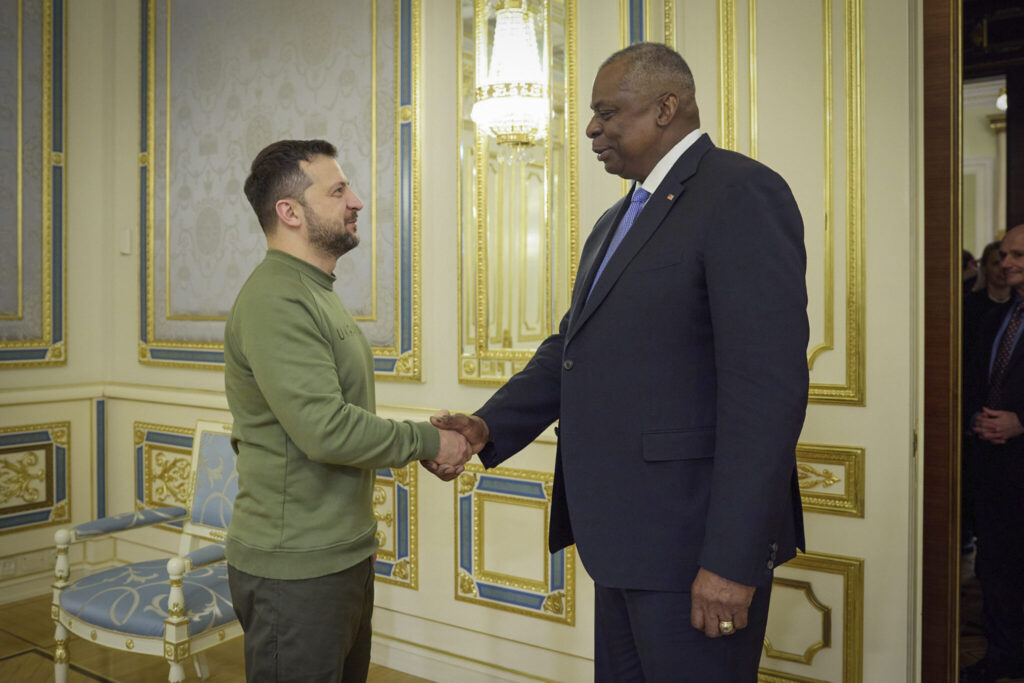
National security experts have watched the Ukrainian forces repurpose outdated American equipment that was headed for decommissioning and use it to obliterate aspects of the Russian armed forces. McConnell has noted that much of the spending stays in the U.S., flowing to defense production in states across the nation.
“Ukraine is at a critical point,” said Democratic Sen. Jack Reed of Rhode Island, chairman of the Senate Armed Services Committee. “The Russians are just counting on us to give up and walk away — and then they walk in.”
But even border security provisions may not be enough to with over Republicans who are growing increasingly skeptical of Biden’s vow to support Ukraine as long as it takes to defeat Russia.
One Republican, Rep. Mike Garcia of California, is trying to bridge the GOP divide by separating the military funds from money the U.S. spends on the Kyiv government, and pushing the Biden administration to be more open about presenting a strategy for the war’s endgame.
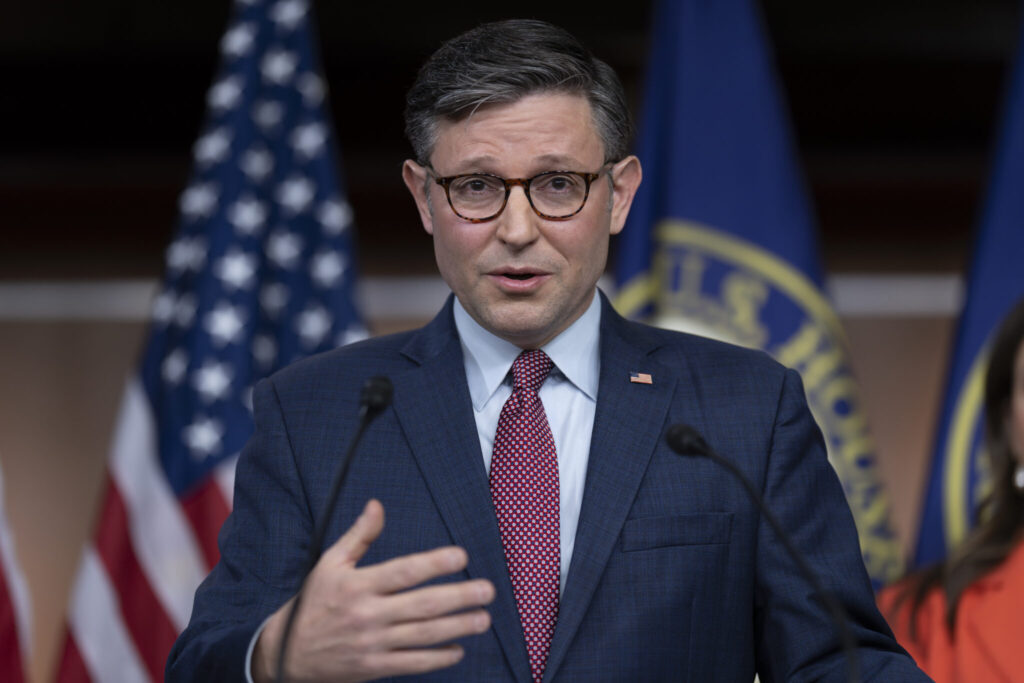
Garcia, who drafted a 14-page report that new Speaker Mike Johnson delivered during a recent White House meeting, said even with border security, Republicans will not approve the full amount for Ukraine that Biden has requested. “If the Ukraine budget part of it is still $61 billion, that ain’t the right answer,” said Garcia, a former Navy fighter pilot who flew combat missions during the Iraq War.
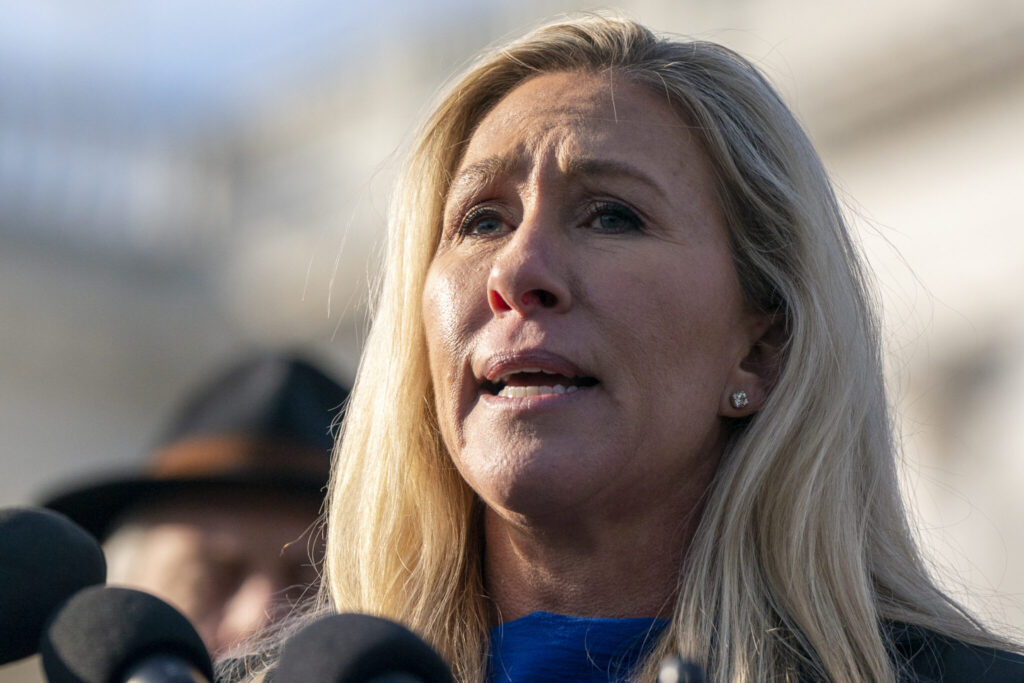
Other Republicans, led by Rep. Marjorie Taylor Greene of Georgia, a Donald Trump ally, have drawn an even deeper line against Ukraine aid.
Yermak, during his talk in Washington, was thankful for U.S. support, and blunt about the need for more.
“I tell you the truth, this winter will be tough for us,” he said, urging Americans to back Ukraine at this “historical moment for all of us.”

